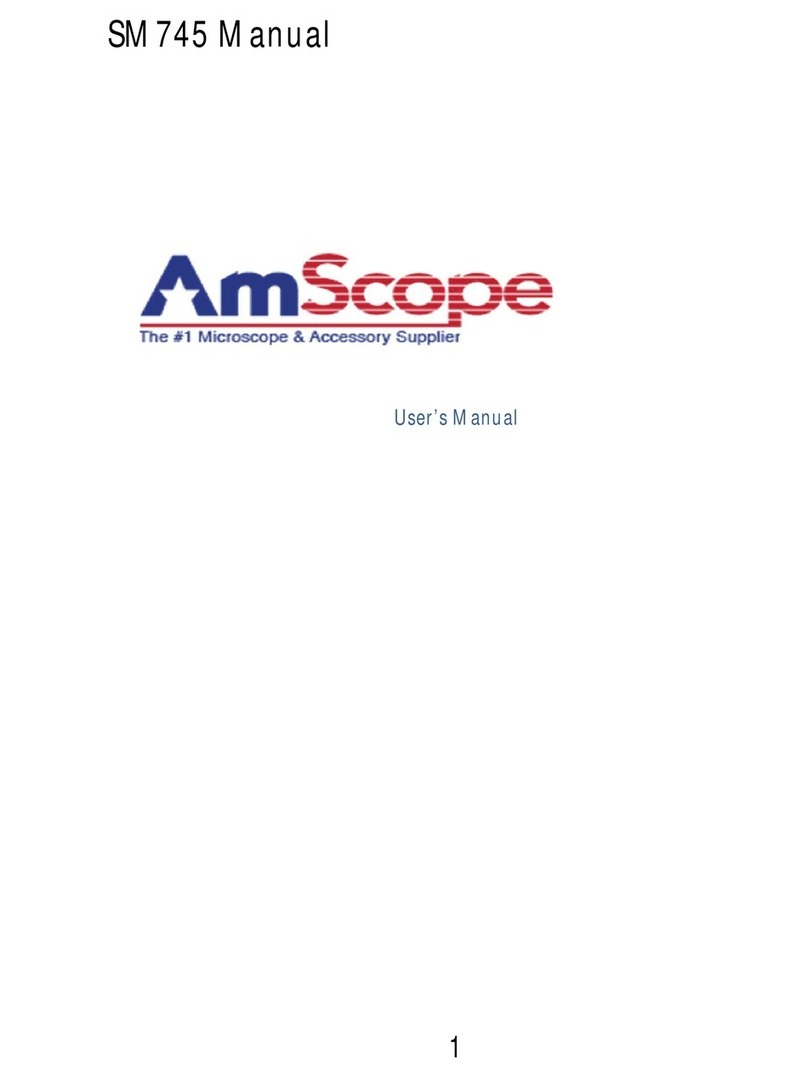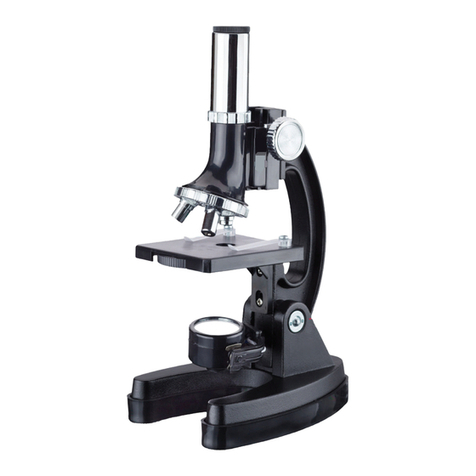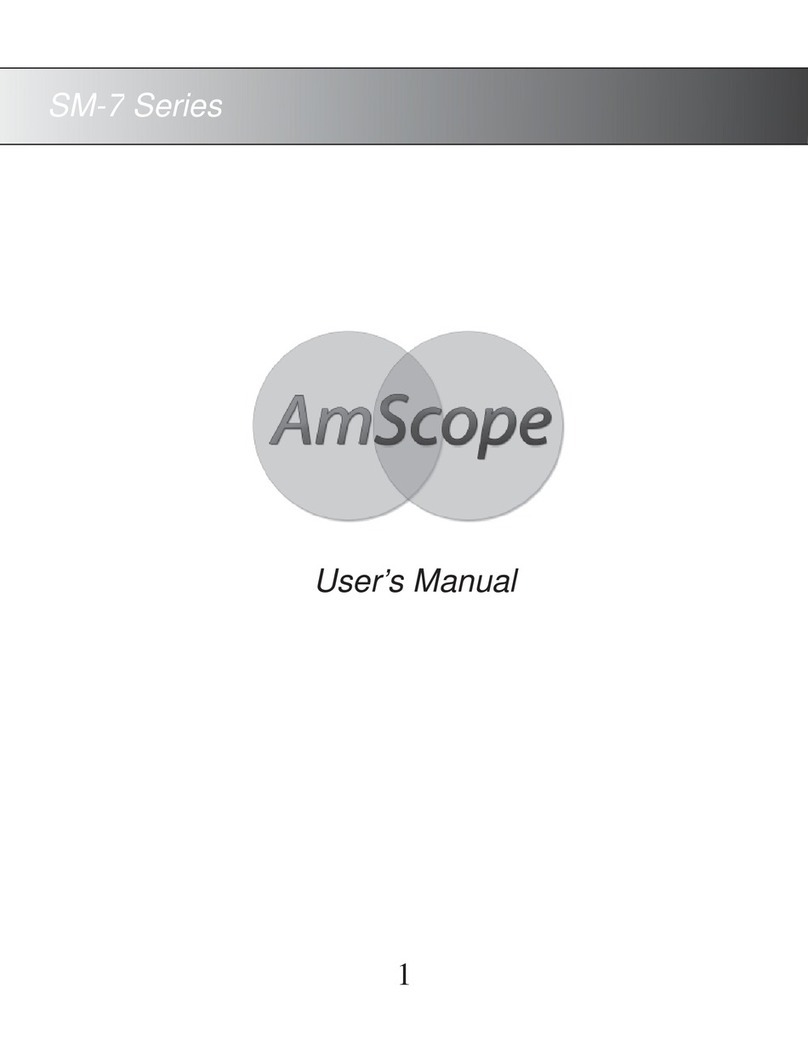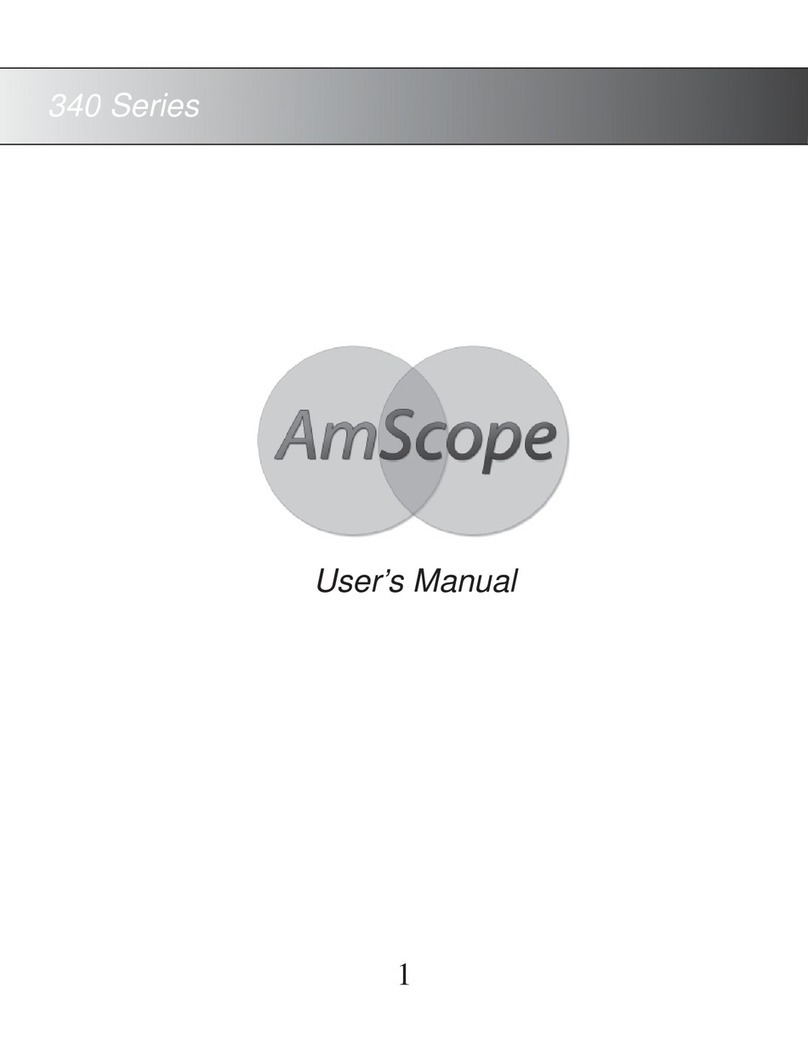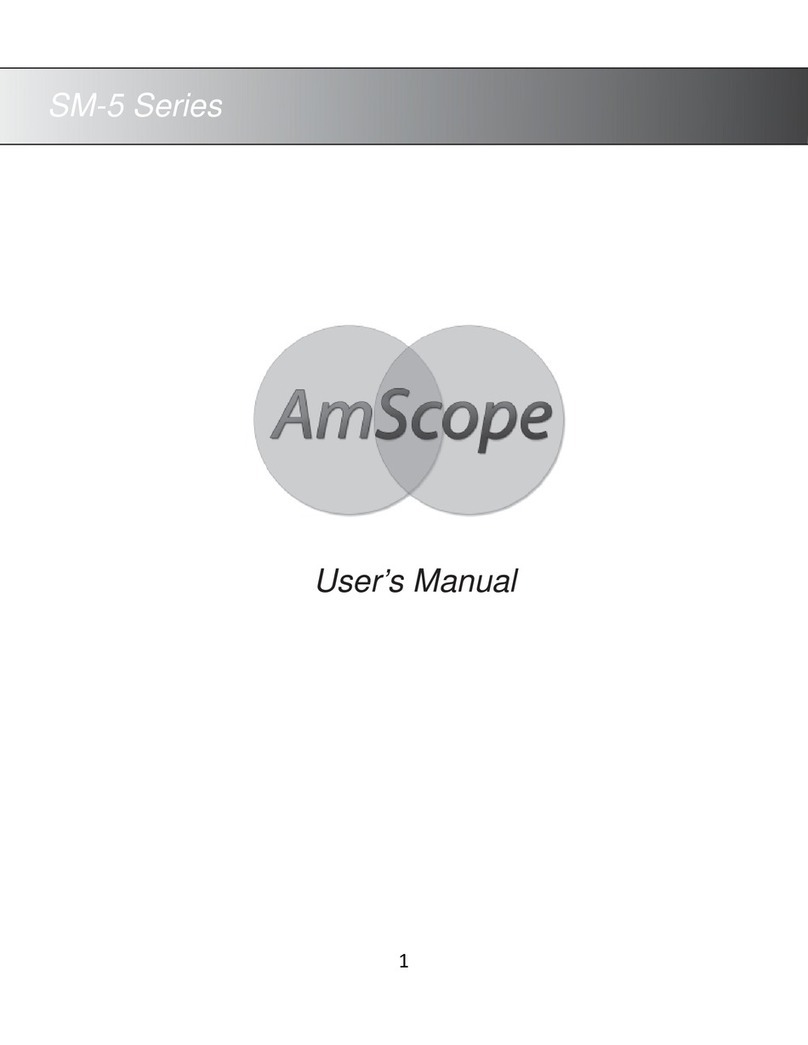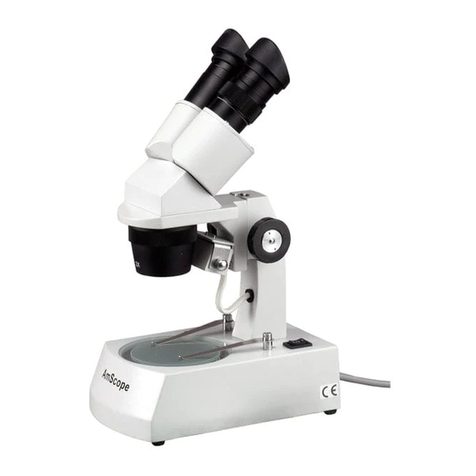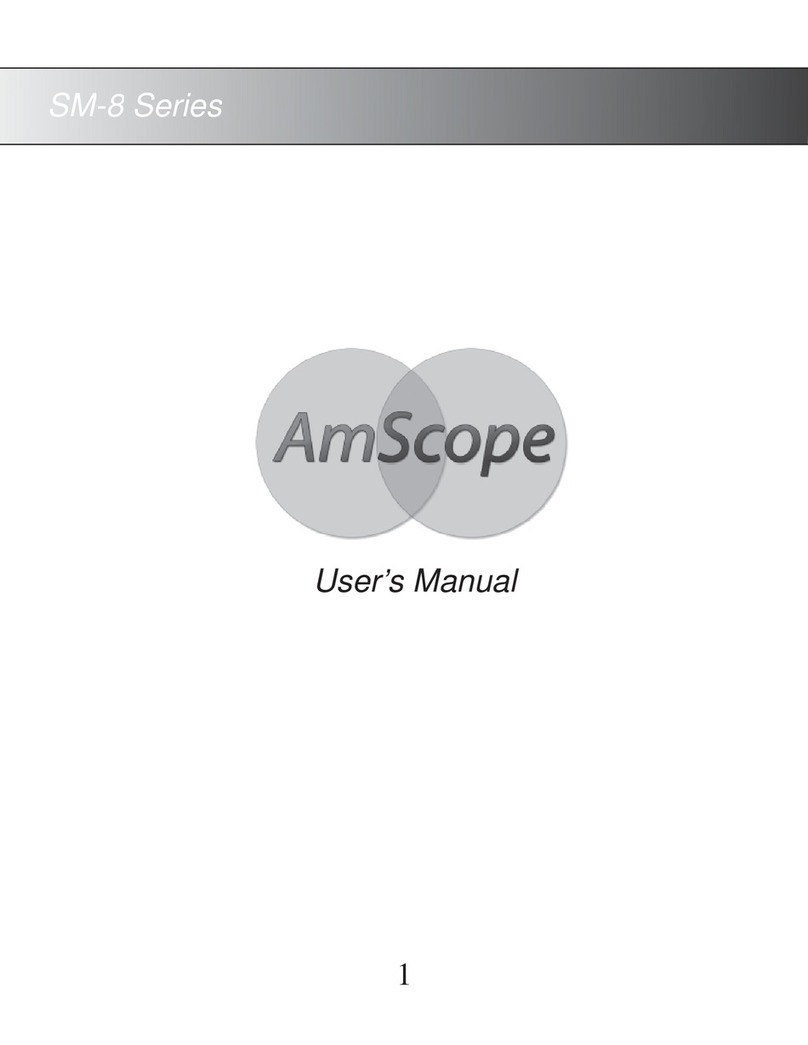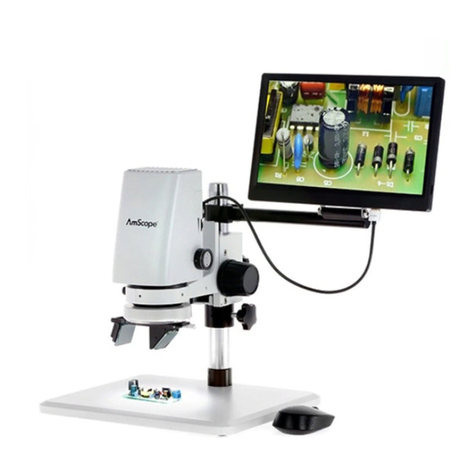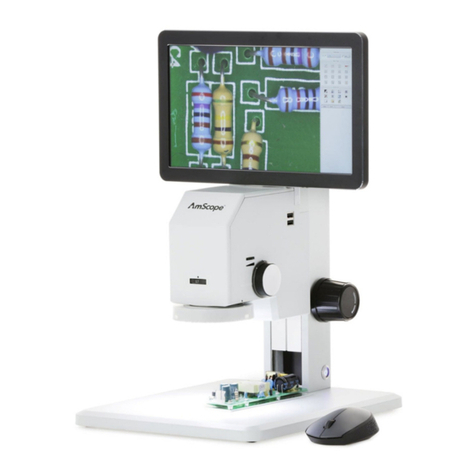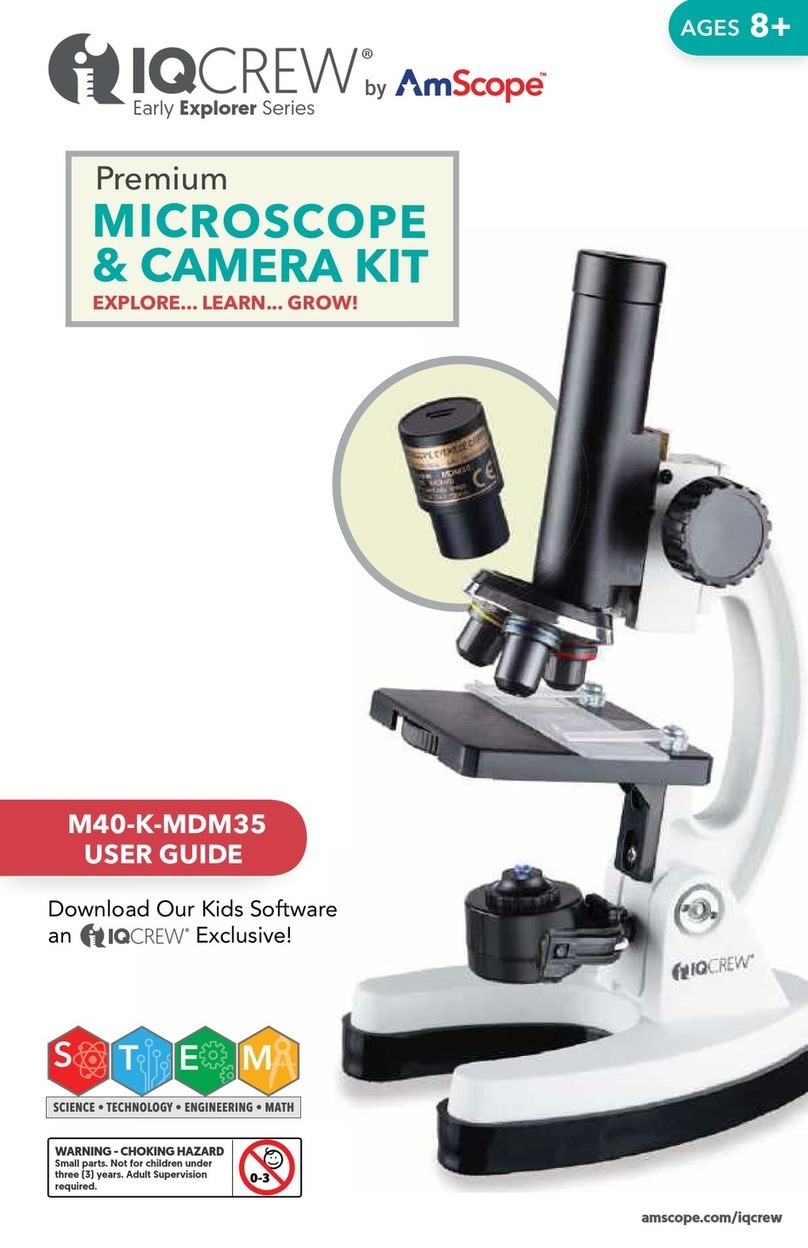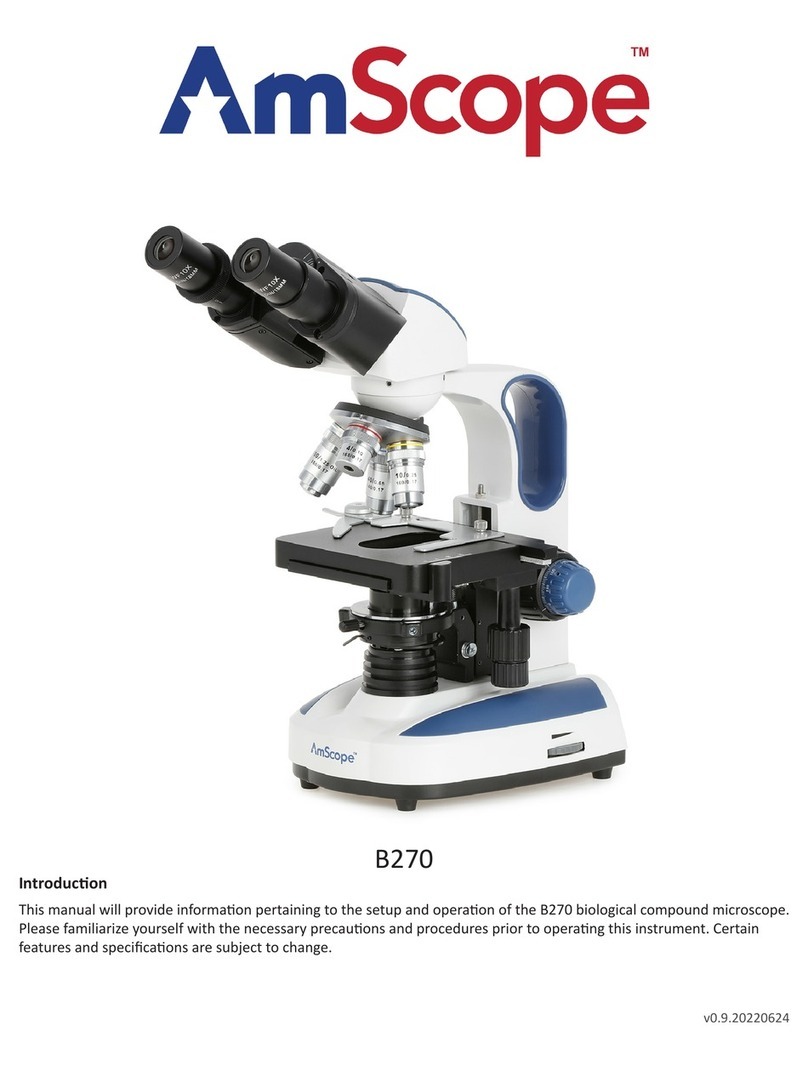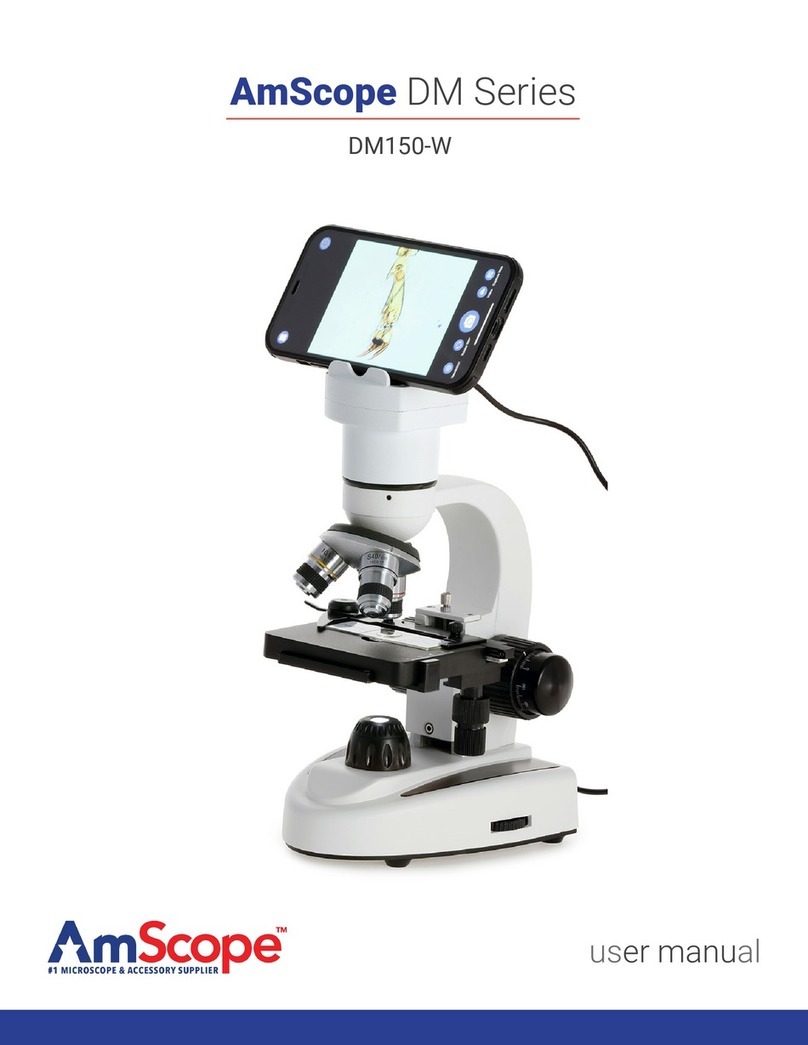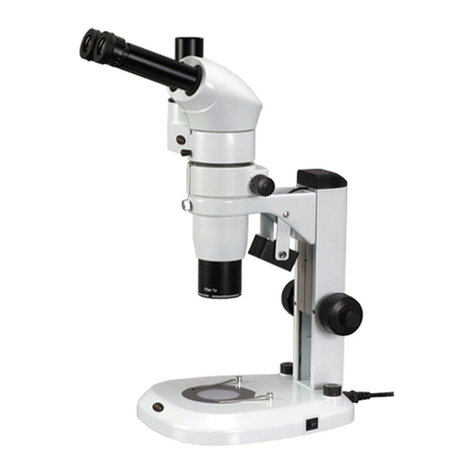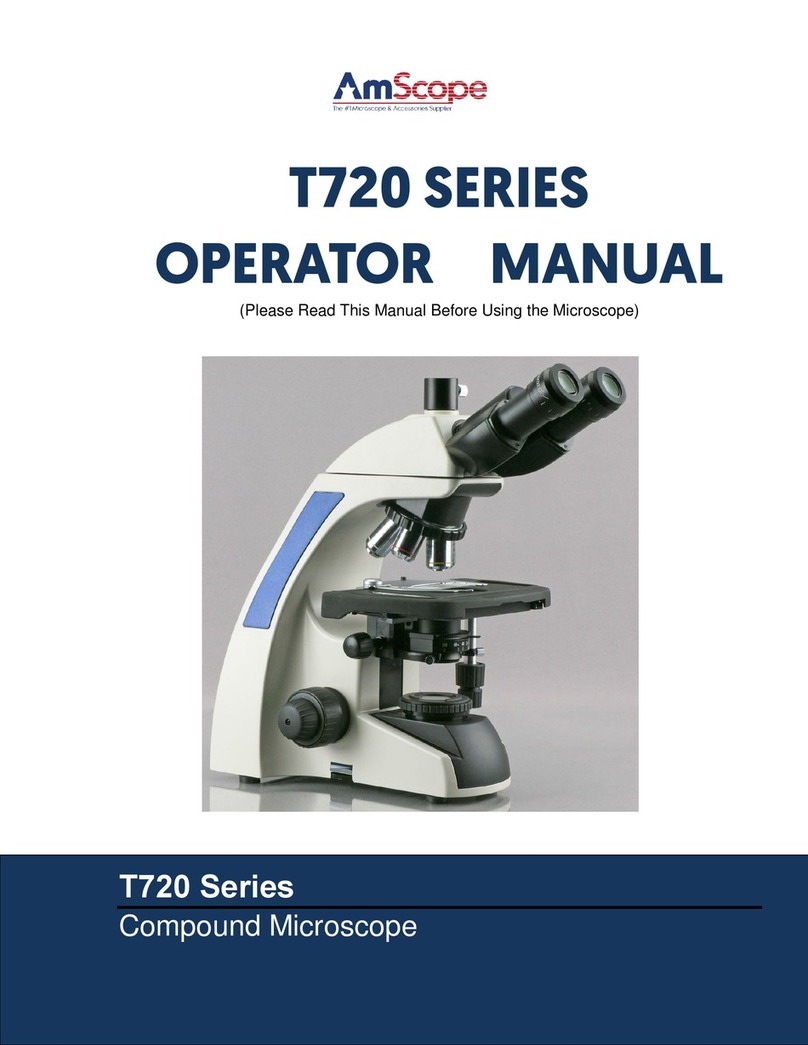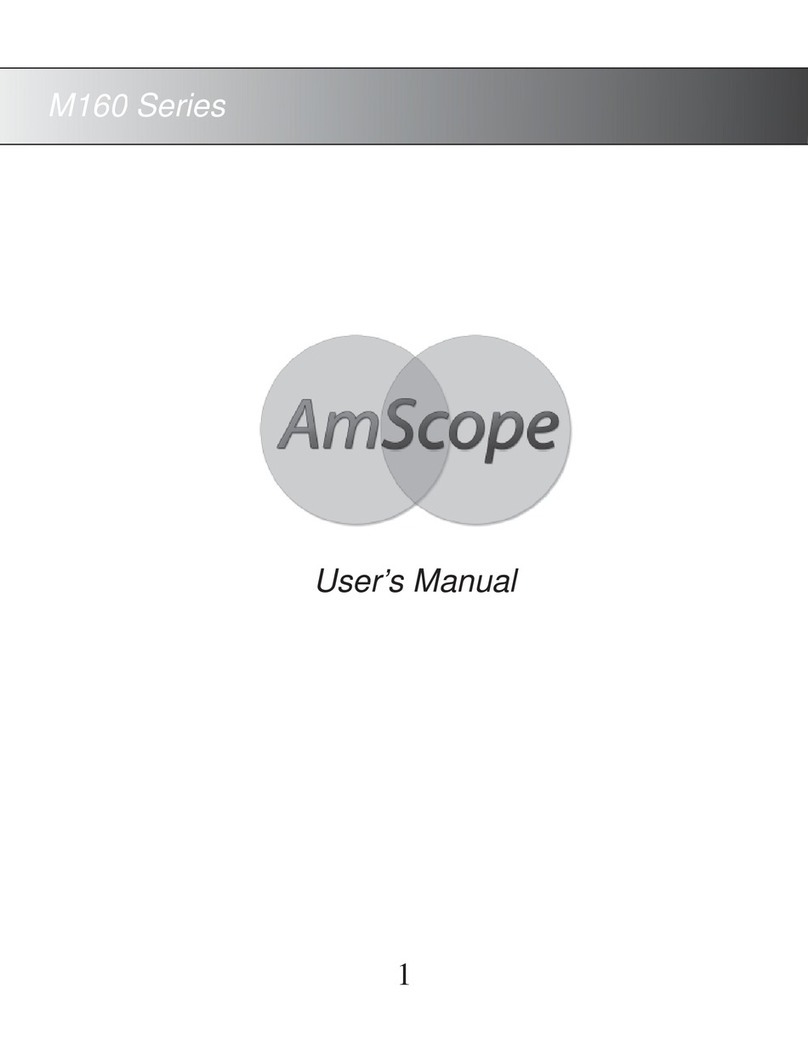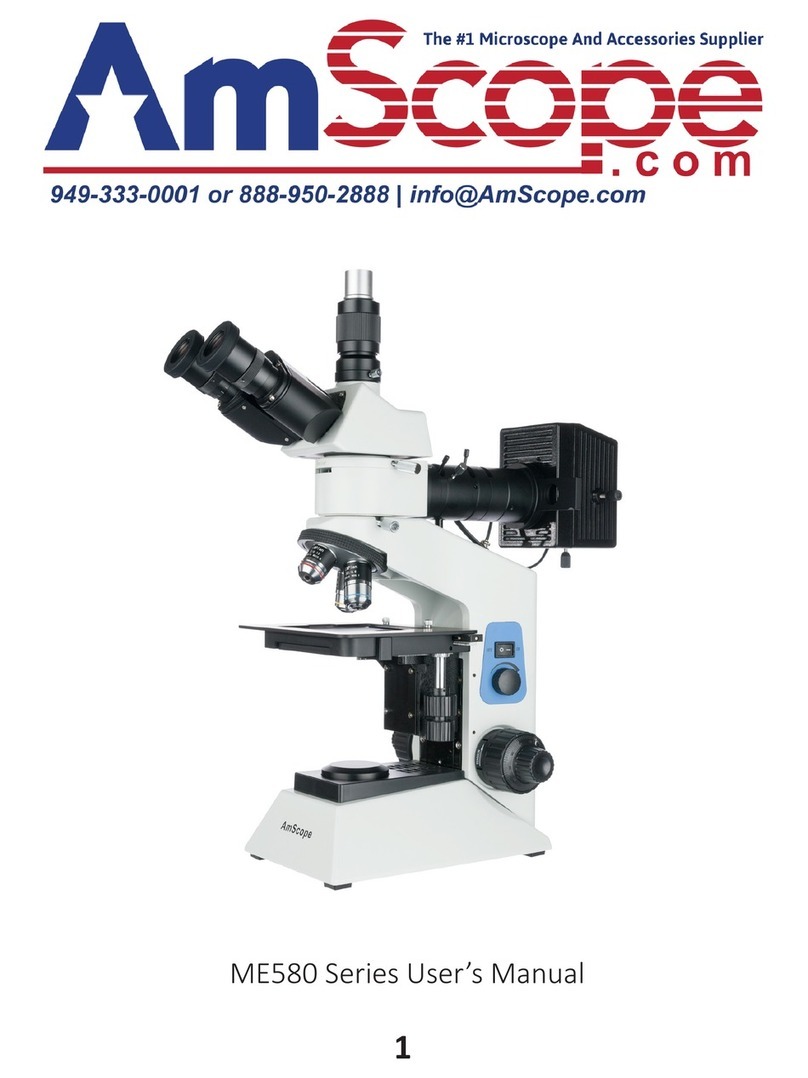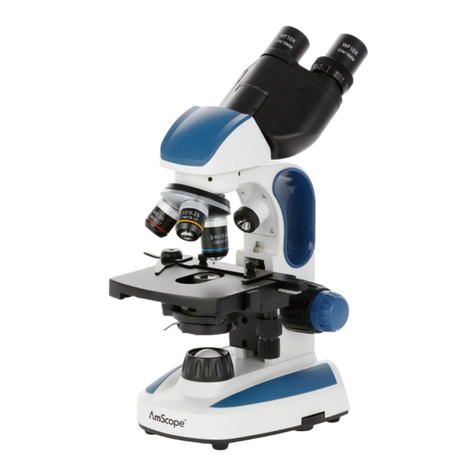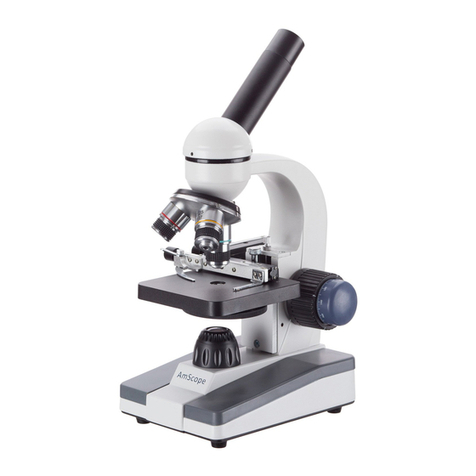
10
Setting Up
1.
Once you have placed your sample on the table or base below the objective, center the sample as best
as possible.
A slide is neither needed nor required for a stereo microscope, although they can be used if
desired. If using a slide,
use the stage clips to hold it in place.
2.
With both eyes open, look into the eyepieces. Adjust the
interpupillary distance by holding the eyepiece tubes
and rotating
the eyepiece tubes either towards or away from each other until
only one circle of light is seen by both
eyes.
3.
Adjust the magnification knob to the lowest setting (0.7) and
move the microscope’s focusing knobs (on the
focusing rack) to
adjust the height of the unit until at approximately 4 inches
(101mm) away from the sample. If
not clear after adjusting,
please be sure that you have not installed any additional Barlow
lenses onto the objective.
4.
Center the object in the field of view once you have achieved focus.
Focusing
1.
A stereo microscope’s focus differs from a compound microscope. Magnification and focal distance
(working
distance) are inversely related to each other. The more magnified one is, the lower the
distance between the objective and the sample to achieve focus.
2.
When first using the microscope, remove all Barlow lenses and set the magnification knob (on the
microscope
head) to the minimum setting (0.7x).
3.
Begin focusing the microscope by moving the knob until the head is about 4 inches (101mm)
away from the
sample. This should bring the microscope in focus at 7x.
4.
If you’d like to use greater magnification than the minimum setting, you will need to move the
microscope head closer to the sample as well as adjust the magnification knob to a higher setting. The
more magnified, the closer you need to be.
5.
If you’ve achieved the maximum magnification (45x and 3/16 of an inch or 4.76mm) on the
microscope, you can
use other accessories to either further increase or further decrease the
magnification, called Barlow lenses. These
lenses screw onto the objective to either amplify or reduce
the total magnification.
